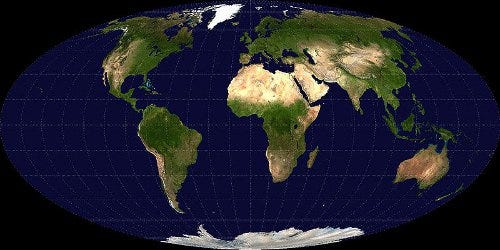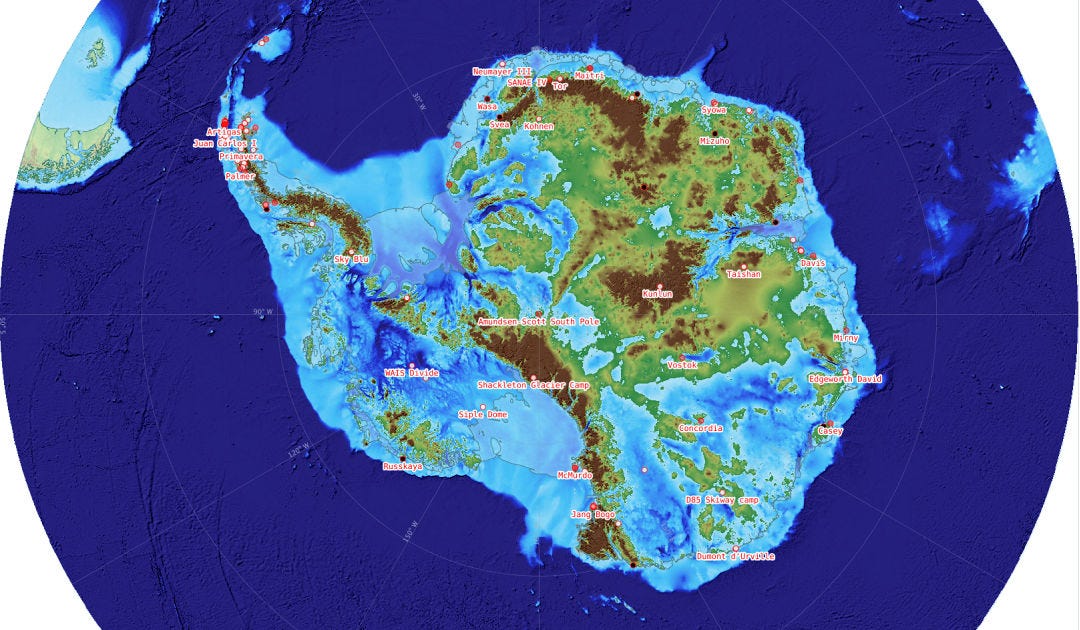Scramble for Antarctica
The land grab of Antarctica will create a whole new global paradigm that will shape the global energy & mineral trade
Antarctica: The Hidden Giant and Its Impending Resource Wars
Antarctica stands as one of the least understood and most mysterious continents on our planet. Its true scale is often lost in translation due to the Mercator projection—a map design introduced by Gerardus Mercator in 1569. While this projection has been invaluable for navigation, it grossly inflates the size of high-latitude regions, making Antarctica appear far larger than it actually is. In contrast, equal-area projections like the Mollweide preserve true sizes but distort shapes.
In stark reality, Antarctica is the world’s fifth-largest continent, sprawling across 14.2 million square kilometers. This puts it larger than Europe and Australia, and closer in size to Latin America. Despite its massive expanse, Antarctica is almost entirely devoid of human life. At any given time, its human population ranges from a few hundred to a few thousand. To grasp its isolation, consider that Ushuaia, Argentina—the closest major settlement—is about 680 miles from the Antarctic Peninsula. Yet, this distance is exacerbated by the treacherous Drake Passage, one of the most perilous stretches of ocean on Earth. With such formidable geographic barriers, it’s no wonder that human eyes didn’t fall upon Antarctica until 1820, when a Russian expedition made the discovery. Nearly two centuries later, our knowledge of what lies beneath its icy veneer remains woefully inadequate.
The ice sheet covers nearly 98% of Antarctica’s landmass, reaching depths of up to 5 kilometers. This impenetrable barrier has led to the ironic reality that we might know more about Mars' surface than we do about Antarctica's hidden landscapes. The bulk of our knowledge comes from radio echo sounding, but even with these sophisticated tools, 90% of what lies beneath the ice remains unmapped and unknown. What we do know, however, is extraordinary.
If the ice were to vanish, Antarctica would reveal two distinct regions: Lesser Antarctica, an archipelago, and Greater Antarctica, a rugged mountainous terrain. Both regions boast unique geological histories, setting the stage for a potential scramble for resources akin to the historical Scramble for Africa.
Keep reading with a 7-day free trial
Subscribe to The Monetary Skeptic to keep reading this post and get 7 days of free access to the full post archives.





